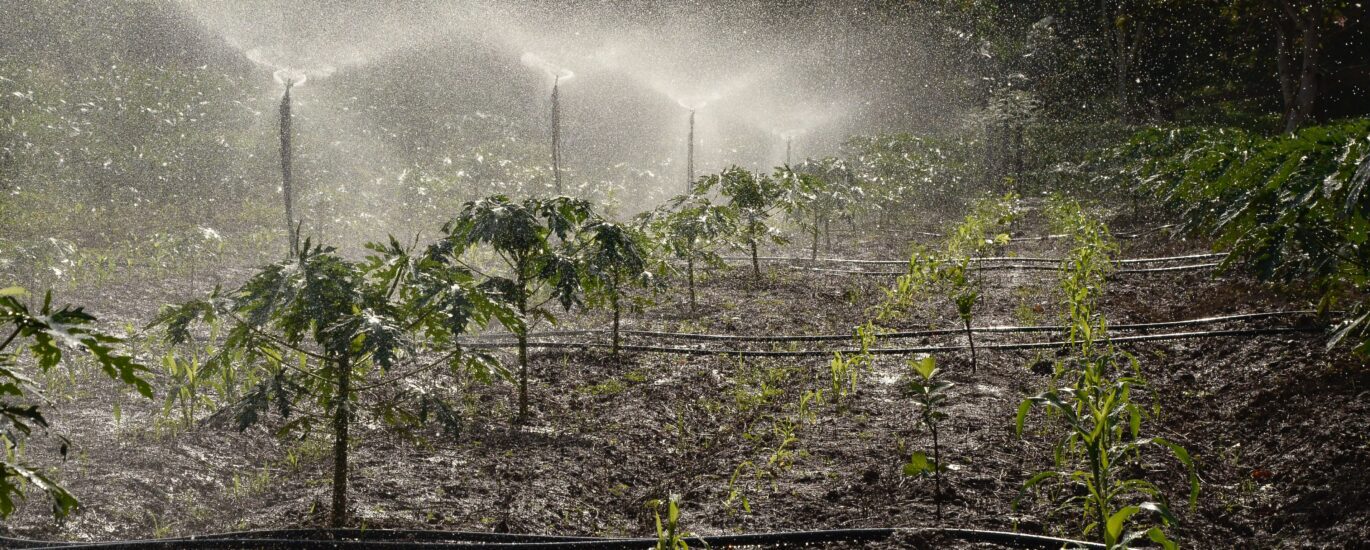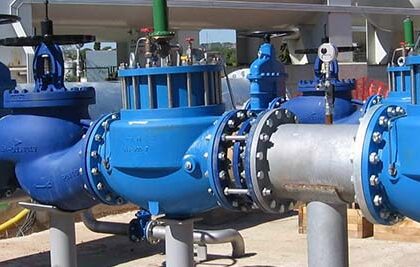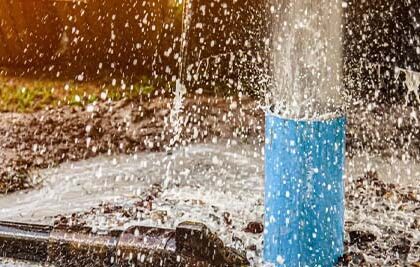Quick Facts
- Irrigated land produces 40% of global food (IFAD, 2015).
- Currently, Uganda’s ratio of cultivated area under irrigation to the irrigation potential is only 0.5%. This compares lowly to 3.6% for Tanzania, 2.0% for Kenya, and 1.6% for Burundi.
- Uganda has one of the highest irrigation potentials in the world with over 15% of her surface area covered by freshwater resources (National Irrigation Policy, 2017).
- More than 50 percent of residential irrigation water is lost due to evaporation, runoff, overwatering, or improper system design, installation, and maintenance.
- Egypt, with 90% of the land being desert practices her agriculture on only 3% of the 1 million square km total land area, almost entirely dependent on irrigation but is able to feed its nearly 90 million people (NBI, 2012).
It is common knowledge that agriculture is the centerpiece of Uganda’s economic development. However, Uganda’s agriculture has progressively been constrained by the frequent occurrence of droughts, and as such consistently fails to realize its full potential. Irrigation systems can play a critical role in closing the potential performance divide of Uganda’s agriculture. While traditionally, irrigation has been a preserve of high-value and ornamental cash crops like sugarcane, flowers, etc., the increasingly variable rainfall patterns, long dry seasons, and recurrent droughts make irrigation inevitable for subsistence food and forage production as well. Irrigation can play a critical role in response to droughts that have dented the country’s food security since well-designed and managed irrigation systems are known to increase yields by 2-5 times for most crops, as intimated by the National Irrigation Policy.
On the side of livestock and dairy farming, dry seasons greatly affect milk production in dairy cattle. This is a result of traditional grass drying up and the associated negative impact on the entire milk production/value-addition chain. Poor livestock nutrition leads to a drop in productivity (milk yield), loss in the body weight of the cow, low reproductive performance, long calving intervals, slow growth, and mortality from starvation in extreme conditions. However, irrigation can play a significant role in taming this perennial challenge through systematic growth and preservation of forage to supplement crop residues and pasture roughages. Irrigation facilitated forage production and management can help overcome the feed shortage, contributing to improved milk production and quality, all year round.
Irrigation is the systematic application of additional water to plants in order to sufficiently meet all of the crop water requirements, with the objective of improving productivity. Irrigation is applied to meet water deficits that reduce crop production, which normally results due to insufficient rainfall and/or insufficient storage within the water table in the soil. Irrigation can be practiced for vegetables, fruits, and forage production in livestock and dairy farming. Through this controlled application of water for agricultural purposes, nutrients may also be provided to the crops through irrigation, a process known as fertigation. The various sources of water for irrigation are wells, ponds, lakes, rivers, canals, tube wells, and even dams. Irrigation offers moisture required for growth and development, germination, and other related functions.
The frequency, rate, amount, and time of irrigation are different for different crops and also vary according to the types of soil and seasons. For example, during dry seasons, crops require a higher amount of water as compared to wet seasons.
Costs for irrigation systems depend on a number of factors such as:
- Closeness to water source.
- The terrain of the land.
- Soil suitability.
- Acreage to be irrigated.
- Equipment used.
The type of irrigation is determined largely by:
- Terrain (topography).
- Land size to be irrigated.
- Source of irrigation water (rivers, lakes, swamps, or reservoirs).
- Availability of power/solar.
- Water conveyance and distribution (pumps or gravity).
- Infield water application technique.
- Amount of soil moisture deficit.
In choosing an efficient irrigation system, a thorough analysis of the type of crop to be farmed, the type of dominant terrain, soil conditions, and operating pressures have to be adequately considered. Irrigation is broadly classified into 3 types depending on how water is delivered to the plants.
Types of Irrigation Systems
There are different types of irrigation practiced for improving crop yield. These types of irrigation systems are practiced based on the different types of soils, climates, crops, and resources. They vary in how the water is supplied to the plants. The goal is to apply the water to the plants as uniformly as possible, so that each plant has the amount of water it needs, neither too much nor too little. The main types of irrigation practiced by farmers include:
- Drip irrigation systems.
- Sprinkler irrigation systems.
- Furrow irrigation systems (Surface irrigation systems).
Drip Irrigation
Drip (or micro) irrigation, also known as trickle irrigation, functions as its name suggests. Water is delivered at or near the root zone of plants, drop by drop, by means of applicators (orifices, emitters, porous tubing, perforated pipe, etc.) operated under low pressure with the applicators being placed either on or below the surface of the ground. This method can be the most water-efficient method of irrigation, for if managed properly, evaporation and runoff are minimized. The field water efficiency of drip irrigation is typically in the range of 80 to 90 percent when managed correctly. Drip irrigation is often used as a means of delivery of fertilizer, a process known as fertigation. It provides slow, even application of low-pressure water to soil and plants using plastic tubing placed in or near the plant’s root zone.
Chemigation and fertigation
The application of both chemicals and fertilizers can be done when using drip irrigation systems through injector pumps. These pumps allow for suitable delivery rate control, while backflow prevention protects both equipment and the water supply from contamination. These systems are very efficient since they deliver to the plant roots directly.
Advantages of Drip Irrigation
- Drip irrigation can help you use water more efficiently since it aims at direct delivery of water to the plants’ roots.
- A well-designed drip irrigation system loses practically no water to runoff, evaporation, or deep percolation in silty soils.
- Drip irrigation also permits the use of fertilizers and chemicals, and it is by far the most efficient in this aspect.
- Drip systems are adaptable to oddly shaped fields or those with uneven topography or soil texture.
- Drip irrigation can be helpful if water is scarce or expensive.
- Precise application of nutrients is possible using drip irrigation.
- It uses less water, reduces the leaching of soil nutrients, and erosion of topsoil.
Disadvantages of Drip Irrigation
- Generally, the initial investment cost per acre of farmland is expensive considering the amount of tubing (piping) needed.
- Drip tape or tubing must be managed to avoid leaking or plugging.
- Except in permanent installations, drip tape causes extra clean-up costs after harvest.
- This type of irrigation requires more maintenance.
N.B: Drip irrigation system design requires careful engineering. Design must take into account the effect of the land’s topography (slope and contour) on pressure and flow requirements. There is a need to plan for water distribution uniformity by carefully considering the tape, irrigation lengths, topography, and the need for periodic flushing of the tape.
Sprinkler Irrigation System
Sprinkler irrigation system is a type of irrigation that imitates natural rainfall. It is a system comprising of a sprinkler-nozzle combination as main system components; devices that achieve an equal circular distribution pattern of water under a particular radius around its installation position. The selection of an appropriate sprinkler and nozzle combination requires knowledge of system types, sprinkler spacing, operating pressures, and soil conditions. In greenhouse production, sprinkler systems are less common and emitters are frequently microsprinklers that deliver water at lower rates with greater precision to the base of the plants.
In essence, a pump is connected to pipes that generate pressure, and water is sprinkled through nozzles of pipes and overhead high-pressure sprinklers. Sprinklers can also be mounted on moving platforms connected to the water source by a hose. Automatically moving wheeled systems known as traveling sprinklers may irrigate areas such as small farms, sports fields, parks, and pastures unattended. This type of system is known to most people as a “water reel” traveling irrigation sprinkler and they are used extensively for dust suppression and irrigation.
Movable sprinkler systems are also in use in various parts of the world. These apply water slowly during the irrigation set, after completing the irrigation set, the sprinkler system is moved to an adjacent area for the next set. This is a cheaper option in comparison to the installation of permanent sprinklers that manage the entire farmland. However, erroneous application of water can result since it largely depends on human judgment, which more than often is not necessarily well competent.
Advantages of Sprinkler Irrigation
- Sprinkler irrigation can be used on rolling land.
- It can permit good control of the amount of water applied.
- It requires less labor in comparison to furrow systems.
Disadvantages of Sprinkler Irrigation
- Although multiple sprinkler heads with short distances between emitters can be used to create a more uniform distribution pattern, the system inherently has an uneven distribution pattern.
- Application of excessive water than is actually required by the plants can result if precision design is not undertaken.
- The system is not suited for crops for which it is undesirable to wet the foliage.
- Although sprinkler systems can be used to deliver chemicals and fertilizers, it is less efficient in comparison to drip irrigation since not all is delivered to the plants.
Sprinkler Nozzle, Pressure, and Spacing Selection: Efficient irrigation system design requires the selection and matching of the sprinkler equipment and spacing to the crop, soil, and field shape. An appropriate sprinkler spacing is determined by the type of nozzle used and the operating pressure selected. Every sprinkler-nozzle combination has a specific operating pressure range. Too much pressure will disperse the water stream into a very fine spray resulting in increased evaporation losses or poor distribution. Wind effects on sprinkler distribution patterns are more pronounced on fine droplet sizes. Conversely, too little pressure will not sufficiently break up the water stream and may result in puddling, runoff, poor distribution patterns, and crop damage.
Surface Irrigation (Flood or furrow)
Surface irrigation is where water is applied and distributed over the soil surface by gravity. Surface irrigation is often referred to as flood irrigation, implying that the water distribution is uncontrolled and therefore, inherently inefficient. In this system, no irrigation pump is involved and the water is distributed across the land by gravity, with the entire surface of the soil covered by ponded water. In Surface irrigation, water from a source such as rivers, pipes, dams, canals, etc. floods the soil surface.
Furrow irrigation is conducted by creating small parallel channels along the field length in the direction of the predominant slope. Water is applied to the top end of each furrow and flows down the field under the influence of gravity, soaking into the earth. Water may be supplied using a gated pipe, siphon, head ditch, or bankless system.
Flood irrigation is a method where a farmer floods the growing plants with water. Rice is the main crop irrigated by flood irrigation.
With surface (furrow, flood, or level basin) irrigation systems, water moves across the surface of an agricultural land, in order to wet it and infiltrate into the soil. Water moves by following gravity or the slope of the land. Surface irrigation can be subdivided into furrow, border strip, or basin irrigation.
Advantages
Surface irrigation is used extensively in rice farming. This is because permanent flooding acts as a natural pest control method and rice can survive in waterlogged soil.
Drawbacks of Surface Irrigation
- Surface irrigation uses a lot of water compared to other irrigation methods.
- It could also drain nutrients beyond the reach of plant roots.
- If the water is excessive, it could cause damage to the plant.
- It is not water use efficient and is also not effective for the application of chemicals and fertilizers.
Centre Pivot Irrigation
Center pivot irrigation is a form of sprinkler irrigation utilizing several segments of pipe (usually galvanized steel or aluminum) joined together and supported by trusses, mounted on wheeled towers with sprinklers positioned along its length. The system moves in a circular pattern and is fed with water from the pivot point at the center of the arc. In Uganda, this system does exist at Kakira Sugar Ltd.
The sprinklers shoot water from pressurized outlets or guns from pipes into the air which then fall on the plants. Center pivot irrigation is a type of sprinkler irrigation, basically with sprinklers on wheels. Water is distributed by overhead high-pressure sprinklers or guns from a central location in the field or from sprinklers on moving platforms.
Manual Irrigation
This is a labor-intensive and time-consuming system of irrigation. Here, the water is distributed through watering cans by manual labor.
Management of Irrigation Systems
Watch out for leaks
As irrigation systems comprise of pipe network, there is a likelihood of wear and tear resulting in leakages. Also, leakages can be a result of external damage to the pipe network during cultivation or by animals and insects. Therefore, it is important to routinely check out for leakages through dedicated physical inspections.
Include a water meter
Inclusion of a water meter after the pump is important as it tracks both the efficiency of the system and that of the pump itself. Through the recording of daily consumption, if an unexpected excessive deviation from the norm is noticed, it may be an indicator of leakage and calls for intensified inspection. On the other hand, if it is noticed that the water delivered was very low compared to the norm, it may be an indicator of reduced pump efficiency or that there is a challenge with the water source or the pre-treatment system before the pump. Either way, knowledge of how much water is used comes in handy. In the systems where irrigation water is paid for, this knowledge is a key input in the economics of the entire system.
Application of chlorine to clear clogged emitters
The piping system is prone to the establishment and growth of algae and other microorganisms. Routine application of chlorine will ensure the system is free of those organisms. This is because chlorine denatures their enzymes hence inhibiting growth and multiplication. However, this must be done with the guidance of a specialist as chlorine can also be harmful to humans.
Benefits of irrigation
- Irrigation promotes resilience against drought and food insecurity.
- Stable irrigation water supply enables farmers to have stable production of crops, increase yield, and hence improve farm income.
- Irrigation makes farmers more resilient to the growing water stress, by insulating against seasonal variability and drought, increasing their agricultural yields and efficiency, and lengthening the growing season.
- Irrigation helps to bring most of the fallow land under cultivation.
- Irrigation helps to stabilize the output and yield levels.
Irrigation efficiency
Increased irrigation efficiency has a number of positive outcomes for the farmer, the community, and the wider environment. Low application efficiency infers that the amount of water applied to the field is in excess of the crop or field requirements. In some parts of the world, farmers are charged for irrigation water hence over-application has a direct financial cost to the farmer. Irrigation often requires pumping energy (either electricity, solar, or fossil fuel) to deliver water to the field or supply the correct operating pressure. Hence increased efficiency will reduce both the water cost and energy cost per unit of agricultural production. A reduction of water use on one field may mean that the farmer is able to irrigate a larger area of land, increasing total agricultural production. Low efficiency usually means that excess water is lost through seepage or runoff, both of which can result in loss of crop nutrients or pesticides with potential adverse impacts on the surrounding environment. On the other hand, low efficiency undermines the effort of ensuring water use efficiency, reversing the strides of achieving sustainable water resources management.
Improving the efficiency of irrigation is usually achieved in one of two ways: either by improving the system design or by optimizing the irrigation management. Improving system design includes conversion from one form of irrigation to another (e.g. from furrow to drip irrigation) and also through small changes in the current system (for example changing flow rates and operating pressures). Irrigation management refers to the scheduling of irrigation events and decisions around how much water is applied.
Conclusion
Irrigation uptake has the potential to substantially increase farm productivity and improve living conditions for millions of smallholder farmers in Uganda, and ultimately a game changer for Uganda’s agriculture. It holds the transformational potential for Uganda’s agriculture, which for too long has continued to punch below her weight











